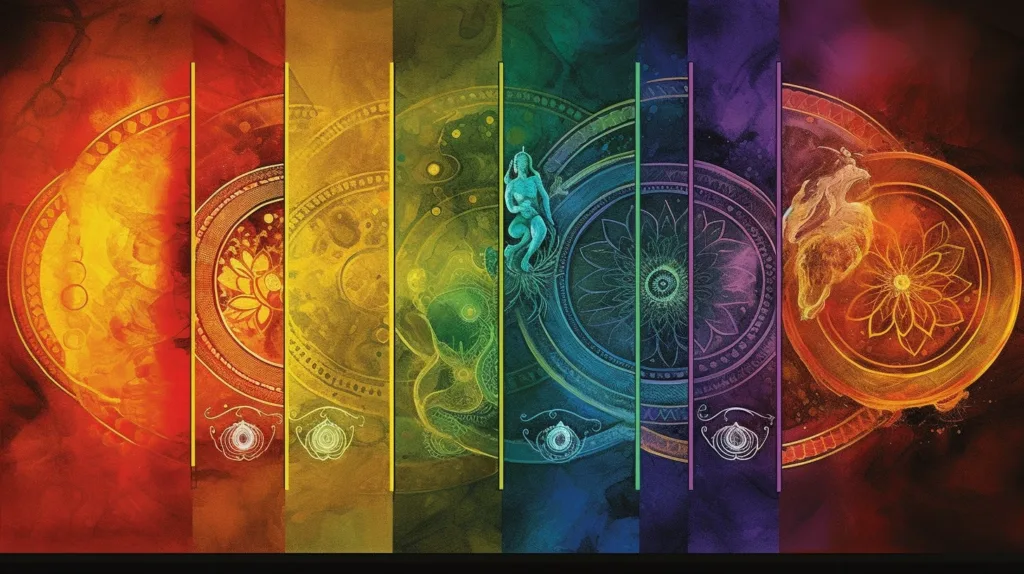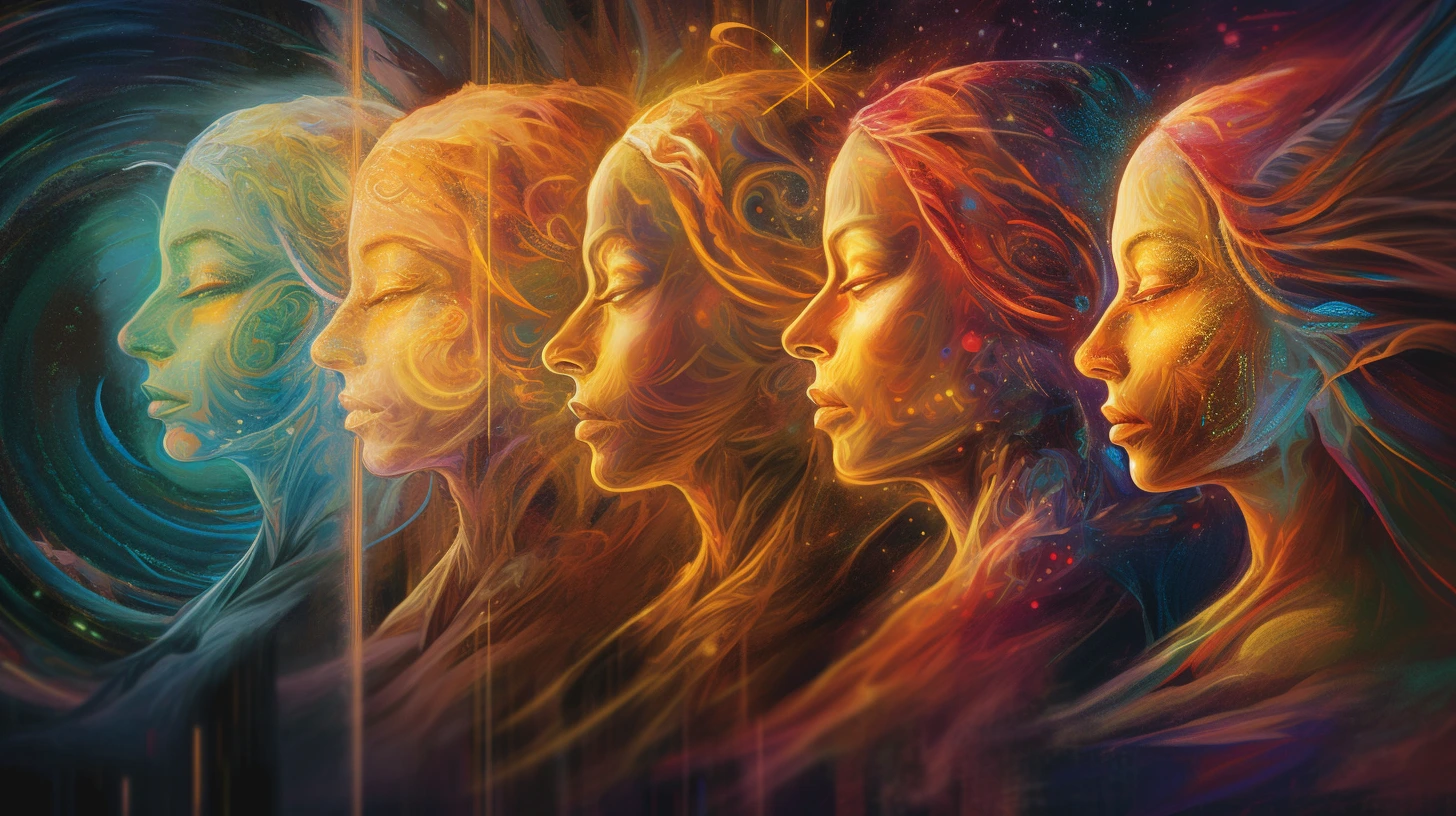Yoga is more than just a physical practice; it’s a profound exploration of the self, encompassing not only the body but also the mind, energy, and spirit. Central to this exploration is the concept of yogic anatomy—a holistic understanding of the human system that transcends the boundaries of modern anatomical science. In this exploration, we will embark on a journey through the realms of yogic anatomy, unveiling the wisdom it holds for those seeking a deeper connection with their inner selves.
The Multilayered Self: The Koshas
Yogic anatomy begins with the recognition that human beings are not just physical entities; we are multidimensional beings composed of various layers, known as koshas. These koshas, or sheaths, represent the different aspects of our existence, from the gross to the subtle.
1. Annamaya Kosha (Physical Sheath)
Annamaya Kosha is the outermost layer, encompassing the physical body—the muscles, bones, organs, and skin. It’s the layer that we perceive with our senses and the one most closely aligned with modern anatomical understanding.
In yoga practice, the Annamaya Kosha is addressed through physical postures (asanas), which promote strength, flexibility, and balance in the body. The health and vitality of this sheath are essential for overall well-being.
2. Pranamaya Kosha (Energy Sheath)
Moving inward, we encounter the Pranamaya Kosha—the energy sheath. This layer is associated with the vital life force, known as prana or chi in various traditions. Prana is the energy that flows through the body and sustains life.
Pranayama, the practice of breath control, is the primary means of working with the Pranamaya Kosha. By regulating the breath, practitioners can enhance the flow of vital energy, balancing and harmonizing the body and mind.
3. Manomaya Kosha (Mental Sheath)
Beyond the physical and energetic layers lies the Manomaya Kosha—the mental sheath. This sheath encompasses the realm of thoughts, emotions, and the mind’s activities. It’s where our beliefs, desires, and mental conditioning reside.
The practice of meditation and mindfulness is the key to working with the Manomaya Kosha. Through these practices, individuals can gain insight into their thought patterns, emotional reactions, and ultimately, find greater mental clarity and balance.
4. Vijnanamaya Kosha (Wisdom Sheath)
Deeper still is the Vijnanamaya Kosha—the wisdom sheath. This layer represents our intuition, discernment, and inner knowing. It’s the realm of wisdom and insight that transcends intellectual understanding.
In yoga, the cultivation of wisdom and inner knowing is a gradual process that often unfolds through deep meditation and self-inquiry. It involves connecting with the higher aspects of the self and recognizing the interconnectedness of all existence.
5. Anandamaya Kosha (Bliss Sheath)
The innermost layer, the Anandamaya Kosha, is often described as the bliss sheath. It represents the state of pure joy, contentment, and spiritual realization. This sheath is the closest to our true nature, unburdened by ego and external conditioning.
Yogic practices that connect us to the Anandamaya Kosha are those that lead to profound states of bliss and self-transcendence. These experiences are often the culmination of deep meditation, self-realization, and spiritual awakening.
The Chakras: Energy Centers of the Body

In addition to the koshas, yogic anatomy places great importance on the chakras—energy centers located along the central channel of the body. There are seven major chakras, each associated with specific physical, emotional, and spiritual qualities:
1. Muladhara (Root Chakra)
The Muladhara chakra, located at the base of the spine, is associated with grounding, stability, and the sense of security. It is linked to our basic survival instincts and our connection to the physical world.
2. Svadhisthana (Sacral Chakra)
The Svadhisthana chakra, located in the pelvic area, is associated with creativity, sexuality, and emotional balance. It governs our relationships with others and our ability to experience pleasure.
3. Manipura (Solar Plexus Chakra)
The Manipura chakra, situated in the solar plexus region, is associated with personal power, confidence, and self-esteem. It plays a crucial role in self-identity and self-worth.
4. Anahata (Heart Chakra)
The Anahata chakra, found at the heart center, represents love, compassion, and emotional healing. It is the bridge between the lower and upper chakras, balancing earthly and spiritual aspects of our being.
5. Vishuddha (Throat Chakra)
The Vishuddha chakra, located at the throat, governs communication, self-expression, and authenticity. It relates to our ability to speak our truth and express ourselves honestly.
6. Ajna (Third-Eye Chakra)
The Ajna chakra, situated between the eyebrows, is associated with intuition, insight, and inner vision. It represents our ability to see beyond the physical realm and access higher states of consciousness.
7. Sahasrara (Crown Chakra)
The Sahasrara chakra, at the crown of the head, is the gateway to spiritual transcendence and enlightenment. It symbolizes unity with the divine and the realization of our highest potential.
Balancing and aligning the chakras is a fundamental aspect of yogic practice. Techniques such as meditation, visualization, and specific yoga asanas can help remove blockages and restore the free flow of energy through these centers.
The Nadis: Energy Channels

In addition to the chakras, yogic anatomy recognizes the existence of nadis—subtle energy channels that carry prana throughout the body. The two most significant nadis are the Ida and Pingala, which spiral around the central channel, the Sushumna.
- Ida Nadi: Associated with the lunar and feminine qualities, the Ida nadi governs the right side of the body and is linked to the parasympathetic nervous system. It is associated with qualities like receptivity, calmness, and intuition.
- Pingala Nadi: Linked to the solar and masculine qualities, the Pingala nadi governs the left side of the body and is associated with the sympathetic nervous system. It is linked to qualities like activity, alertness, and logic.
The Sushumna nadi, running along the spinal cord, represents the central channel through which spiritual energy rises, leading to enlightenment and self-realization. Balancing the flow of energy in these nadis is crucial for maintaining physical and energetic well-being.
The Importance of Yogic Anatomy in Practice
Understanding yogic anatomy provides practitioners with a deeper awareness of the interconnectedness of their physical, mental, and spiritual dimensions. It offers a roadmap for personal growth and self-realization, guiding individuals on their journey toward inner peace and wholeness.
Here’s how an awareness of yogic anatomy can enhance your practice:
1. Alignment and Balance
Knowledge of the koshas, chakras, and nadis can help you align your physical postures (asanas) with your energetic and mental states. This alignment promotes balance and harmony in your practice.
2. Healing and Transformation
By working with the chakras and energy centers, you can address imbalances and emotional blockages, facilitating healing and personal transformation.
3. Deeper Meditation
Understanding the subtle layers of the self, including the Manomaya and Vijnanamaya koshas, can deepen your meditation practice, allowing you to explore the depths of your consciousness.
4. Mind-Body Integration
Recognizing the interconnectedness of the physical, mental, and energetic aspects of your being encourages a holistic approach to health and well-being.
5. Spiritual Awakening
For those on a spiritual path, yogic anatomy provides a framework for understanding the journey toward self-realization and the state of unity with the divine.
Conclusion
Yogic anatomy invites us to embark on an inner journey, transcending the limitations of the physical body and delving into the vast realms of the self. It teaches us that our existence is not confined to the material world alone but extends to the subtler layers of consciousness, energy, and spirit.
As you continue your yoga practice, consider delving deeper into the wisdom of yogic anatomy. Embrace the koshas, chakras, nadis, and all that they represent as tools for self-discovery, healing, and transformation. By integrating these teachings into your practice and life, you can unlock the profound potential of your inner self and embark on a journey of spiritual awakening and holistic well-being.
For more resources on the Koshas and Chakras:




